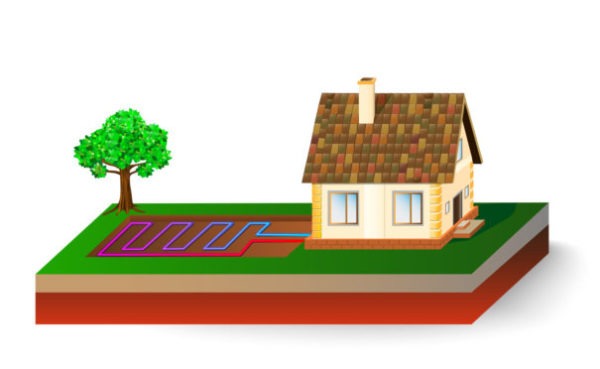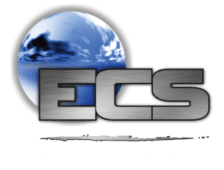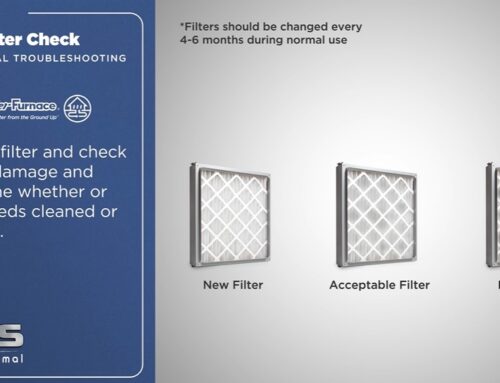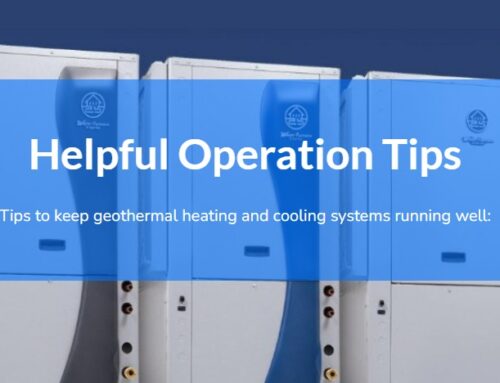
What is a geothermal heat pump?
A geothermal heat pump (also called a ground source heat pump) is a renewable alternative to a furnace or boiler. It’s a critical component of a geothermal system.
A geothermal system is made of 2 major parts:
- A geothermal heat pump that sits inside your home (typically where the furnace used to sit)
- Underground pipes, called ground loops, installed in your yard below the frost line
The critical difference between furnaces and geothermal heat pumps is the heat source used to warm the home. A typical furnace creates heat by burning oil or gas in its combustion chamber, whereas a geothermal heat pump moves heat from the ground that already exists. Additionally, while furnaces and boilers can only heat, many geothermal heat pumps can heat and cool.
How do geothermal systems work?
Simply put, a geothermal system pulls heat from the ground to heat your home in the winter, and it dumps heat from your home into the ground to cool it in the summer. That explanation might sound a little science fiction, but geothermal systems operate quite similarly to the refrigerator in your kitchen.
Just a few feet below the frost line, the ground is a constant ~50 degrees Fahrenheit year-round. A water-based solution circulates through underground pipes where it absorbs the ground’s heat and is carried into the geothermal heat pump.
The solution exchanges its heat with the liquid refrigerant inside the heat pump. The refrigerant is then vaporized and passed through a compressor where its temperature and pressure are increased. Finally, the hot vapor enters a heat exchanger where it transfers its heat to the air. This hot air is distributed through the home’s ductwork and warmed to whatever temperature set on the thermostat.
How efficient are geothermal heat pumps?
For every 1 unit of energy used to power your geothermal system, four units of heat energy are supplied. That’s about 400% efficient! Geothermal heat pumps can achieve this efficiency because they don’t create heat – they transfer it. Only about one-third to one-fourth of the energy delivered in heating with geothermal systems comes from electricity consumption. The rest is extracted from the ground.
In contrast, a brand new high-efficiency furnace might be rated 96% or even 98% efficient. For every 100 units of energy used to power your furnace, 96 units of heat energy are supplied, and four units are lost as waste.
Some energy is always lost in the process of creating heat. ALL of the power delivered with a combustion-based furnace is produced by burning a fuel source.
How long do geothermal heat pumps last?
Geothermal heat pumps last significantly longer than conventional equipment. They typically last 20-25 years.
In contrast, conventional furnaces generally last between 15 and 20 years, and central air conditioners last 10 to 15 years.
Geothermal heat pumps last a long time for two big reasons:
- The equipment is protected indoors from weather and vandalism.
- No combustion (fire!) within the geothermal heat pump means no flame related wear-and-tear and more moderate temperatures within the equipment, protecting from internal extremes.
Geothermal ground loops last even longer, typically more than 50 years and even up to 100!
Are you ready to install a geothermal unit in your home? Please get in touch with us and we’ll let you know what unit is right for you and make sure it’s installed the right way!

Installing ground source heat pumps since 1993
Phone: 816-532-8334
Contact Us Today for a free consultation.






